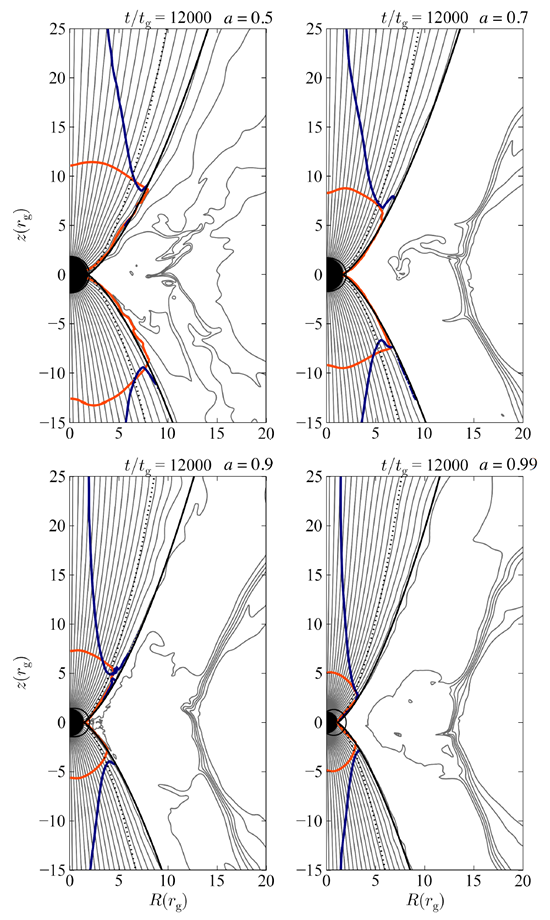|
Image Credit: Nakamura et al. (2018), ApJ, 868, 146

It is well-known that the relativistic outflow, which is driven by the spinning black hole, may NOT originated from the event horizon although the Poynting flux can be produced there by the Blandford-Znajek mechanism (Blandford & Znajek 1977). Steady solutions of the GRMHD jet suggest there is a stagnation surface where the radial (poloidal) velocity becomes zero (u^r = 0) in the magnetically dominated funnel (Takahashi et al. 1990; Pu, Nakamura, Hirotani et al. 2015). We here demonstrate how the stagnation surface (navy solid line) as a function of the black hole spin (the Kerr parameter a=0.5 - 0.99). The overall structure does not change, but it shifts toward the black hole if a increases (this is essentially similar to the magneto-centrifugal process by Blandford & Payne 1982). The closest position of the stagnation surface located at the outer layer of the funnel, where the the highest magnetization (orange line, i.e., the lowest mass loading) is expected with an effective differential collimation of the poloidal fluxes in the funnel. We propose this is a physical process why the edge-brightened emission (the spine-sheath structure) can be observed, which is independent on the viewing angle (M87, Cyg-A, Mrk421, Mrk501). If this is true, the edge-brightened feature implies the jet is driven by the spinning black hole, rather than the accretion disk.
|
 asiaa.sinica.edu.tw Media Request: epo
asiaa.sinica.edu.tw Media Request: epo asiaa.sinica.edu.tw
asiaa.sinica.edu.tw 
